Abstract
A method for appraising the distribution of diffusing capacity of the lungs (DL) in relationship to pulmonary capillary blood flow ([unk]QC) in normal human subjects was derived from measurements of oxygen diffusing capacity (DLO2) and carbon monoxide diffusing capacity (DLCO) performed during breath holding. This method utilizes the fact that the observed DLO2 is considerably reduced in value if uneven distribution of DL with respect to [unk]QC (uneven DL/[unk]QC) is present. In contrast, DLCO is barely affected by uneven DL/[unk]QC, and from its measured value one can calculate the value DLO2 would have if no uneven DL/[unk]QC were present (true DLO2). Once observed DLO2 and true DLO2 are known, the degree of uneven DL/[unk]QC in the lung can be calculated.
In five normal, resting, sitting subjects average values for true DLO2 were 57 ml per (minute × mm Hg), and the directly measured DLO2 was 33 ml per (minute × mm Hg). These values could be explained if one-half of total [unk]QC were distributed to approximately 15% of total DL.
These measurements did not permit the determination of the alveolar to end capillary O2 gradient, but calculations demonstrate that an important factor in determining its size may be the pattern of uneven DL/[unk]QC present in the lungs. Estimations of the alveolar-end capillary O2 gradient from measurements of DLCO or DLO2 that do not take into account uneven DL/[unk]QC may underestimate its size.
Full text
PDF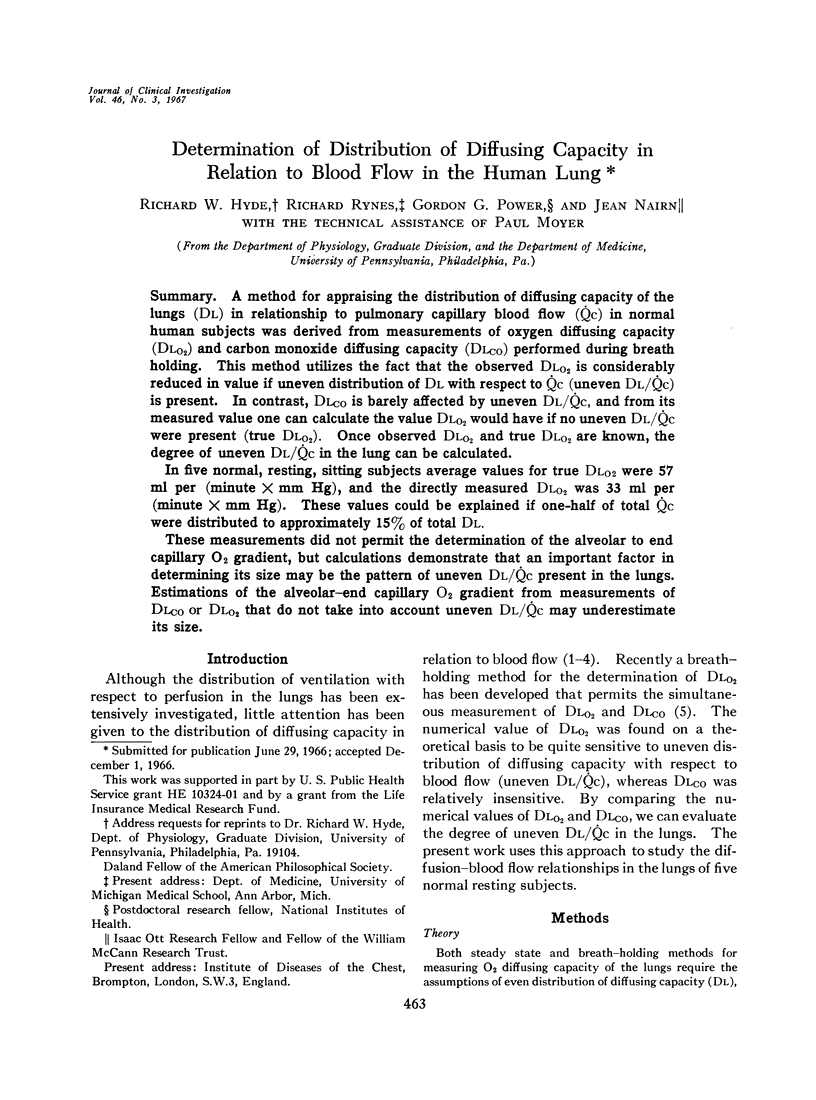
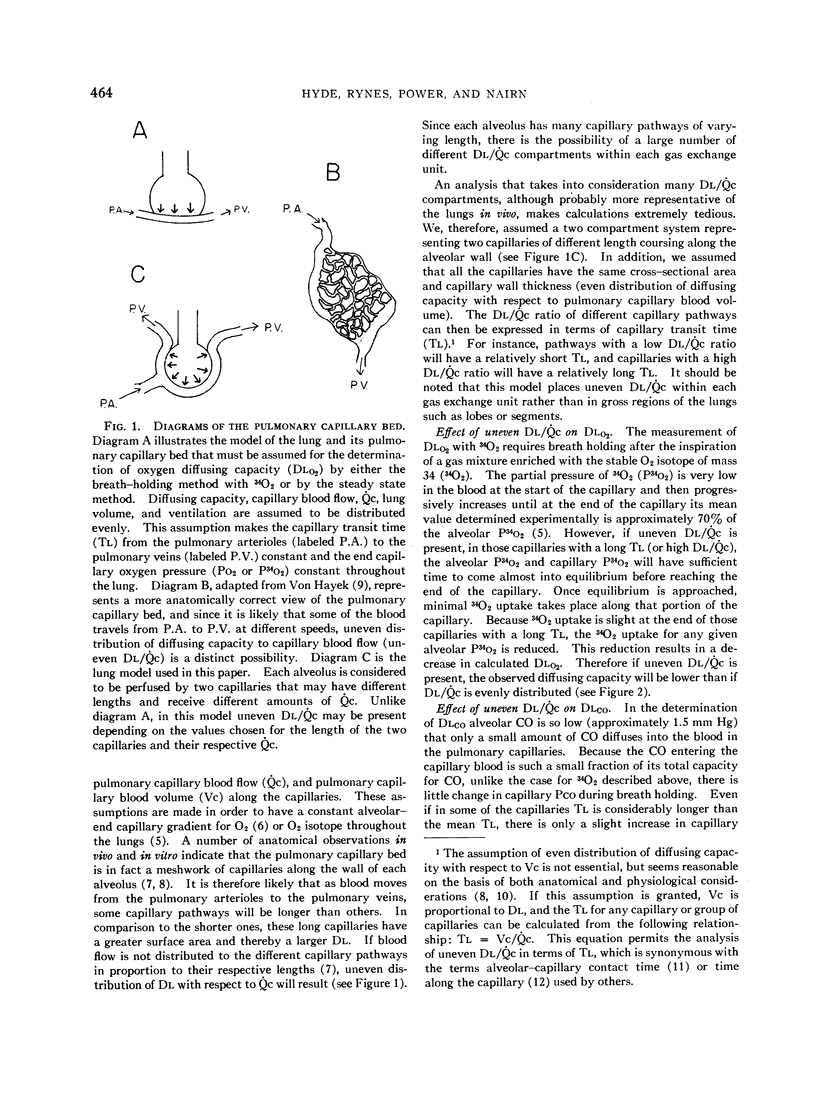
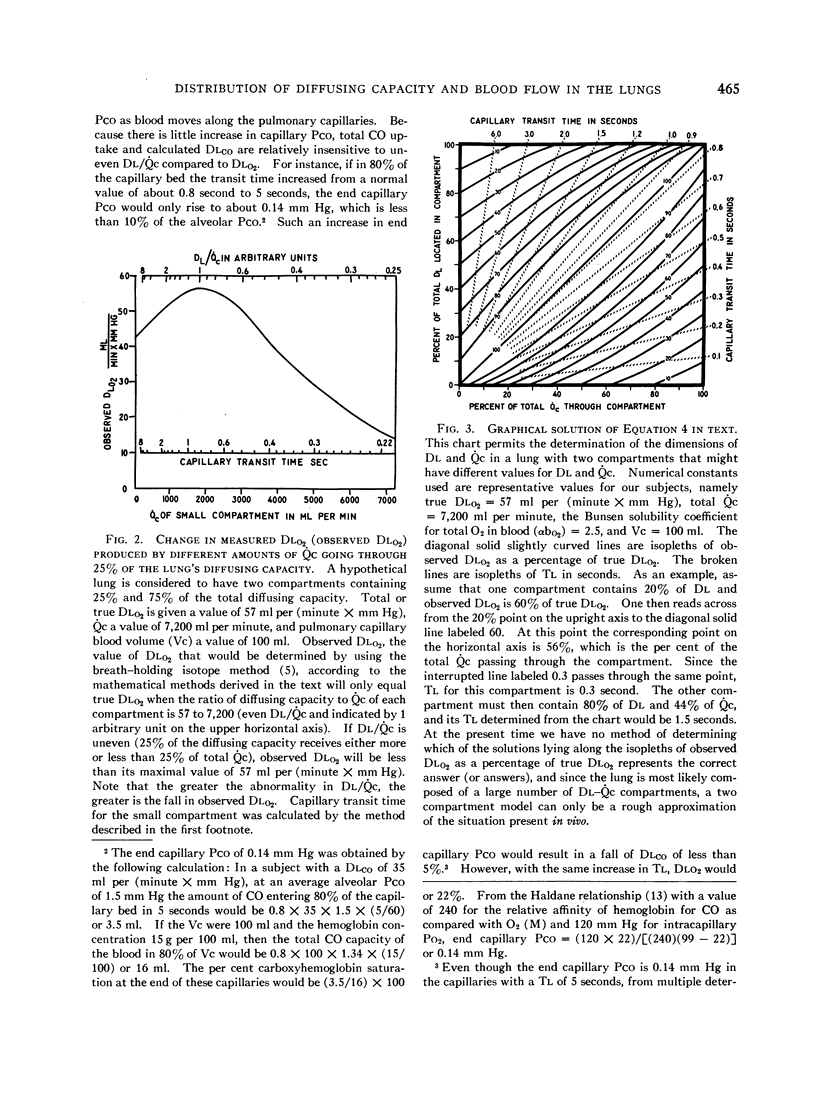
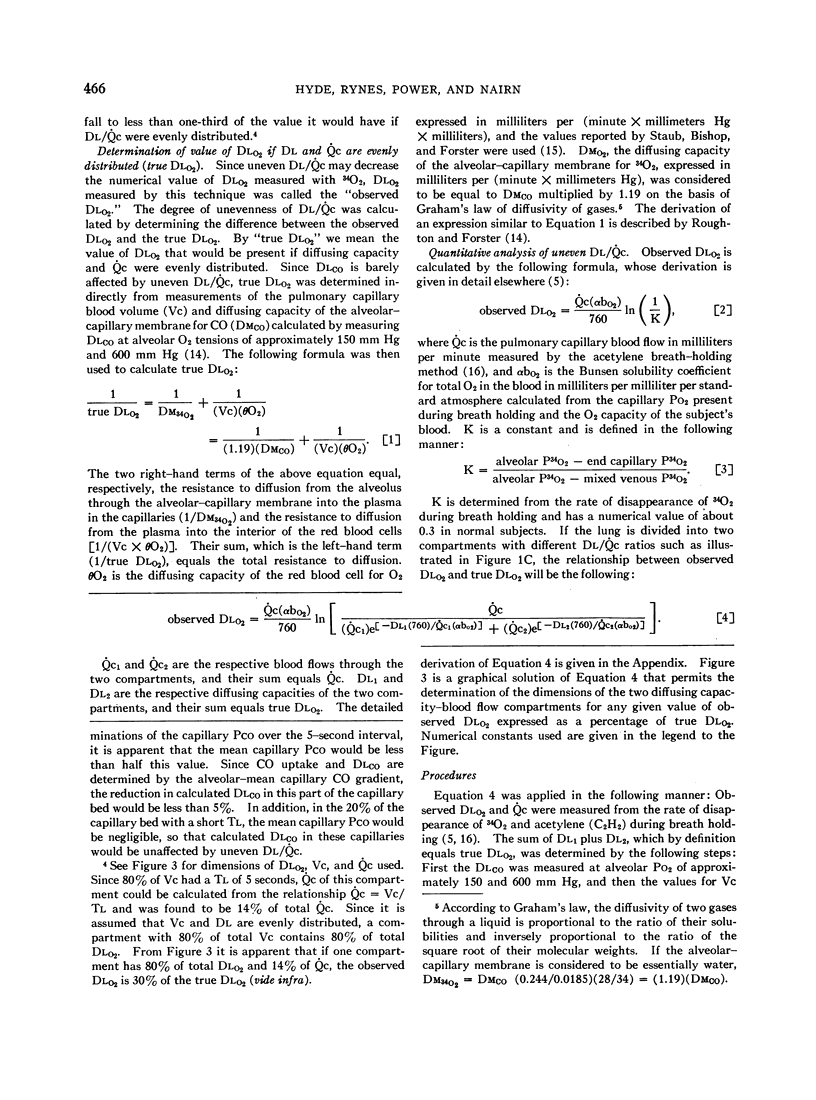
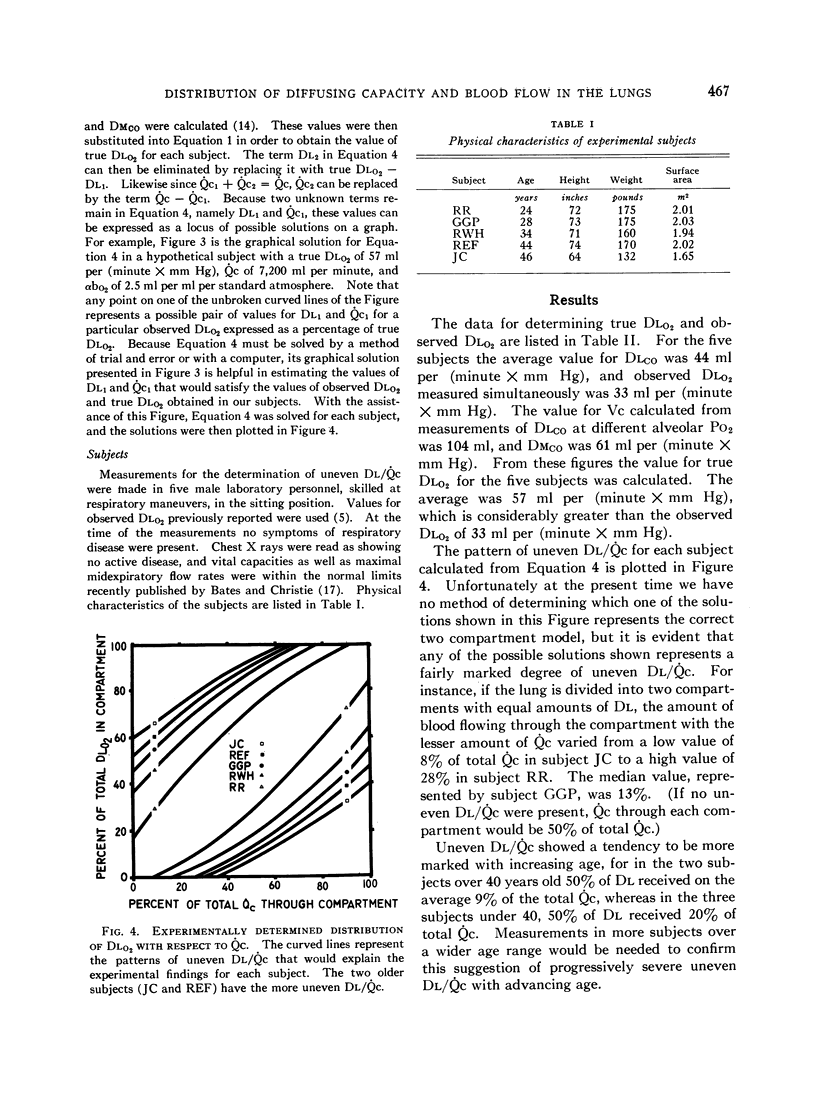
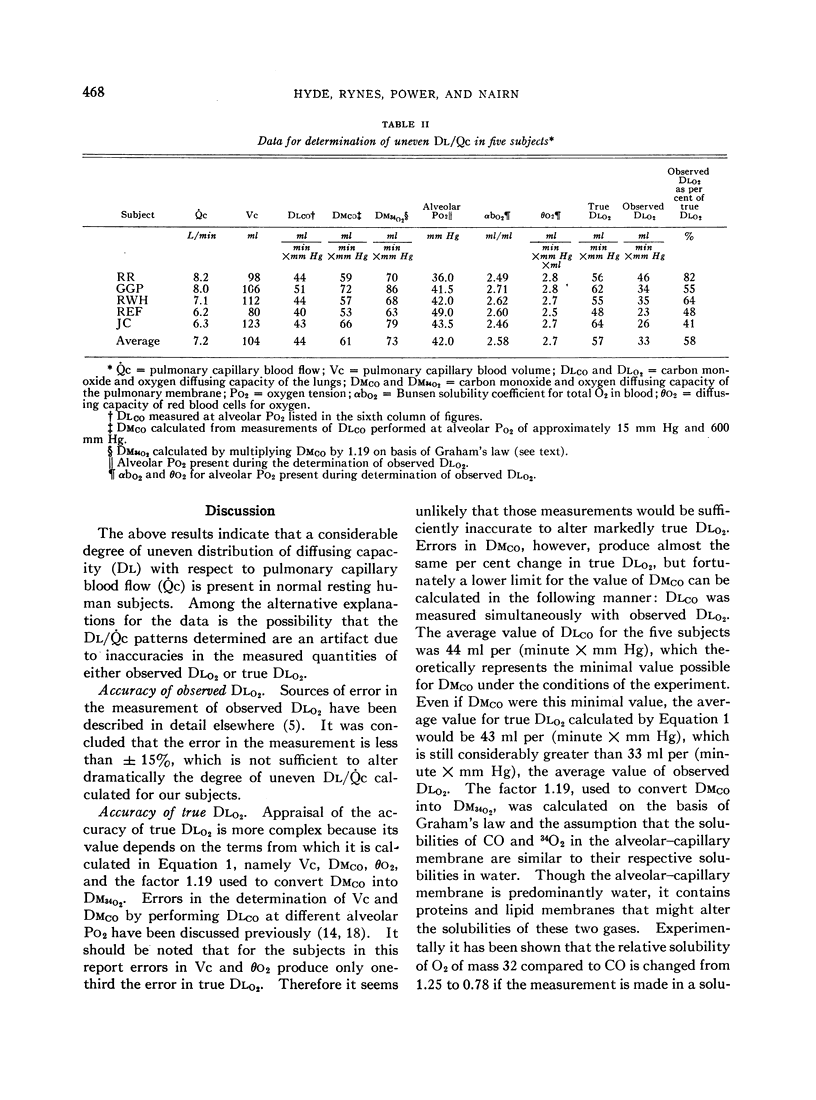
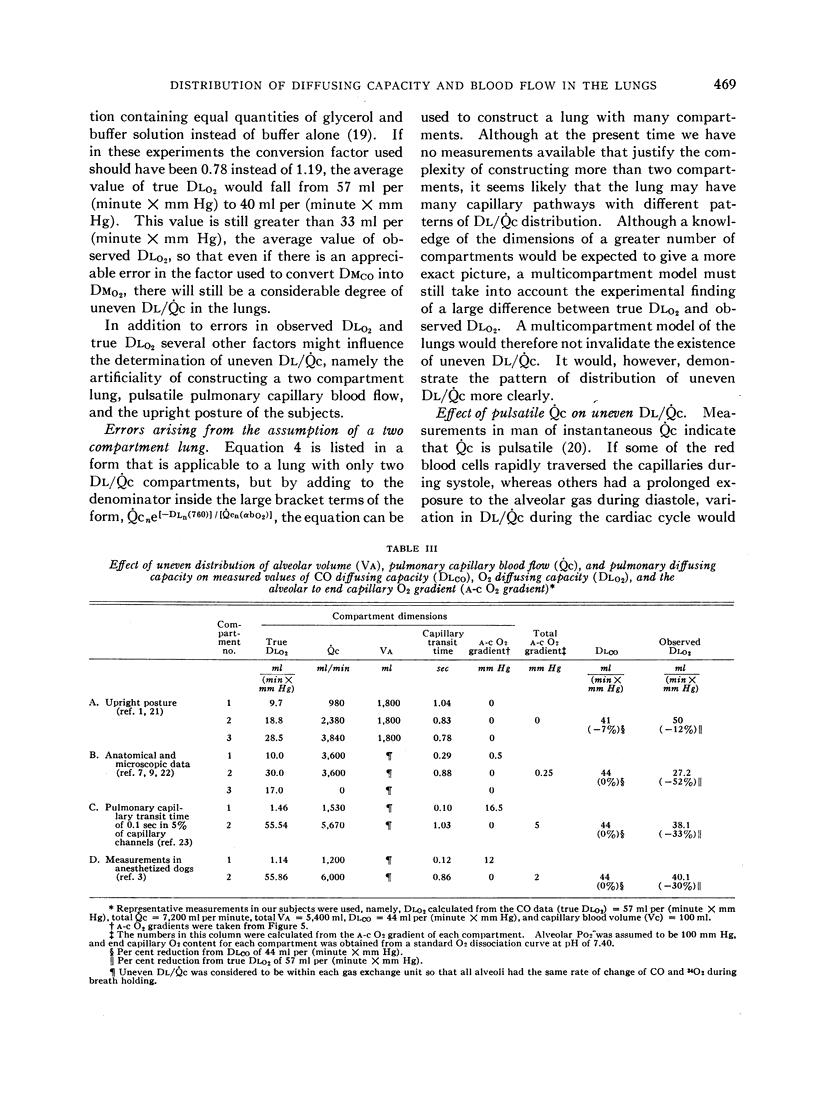
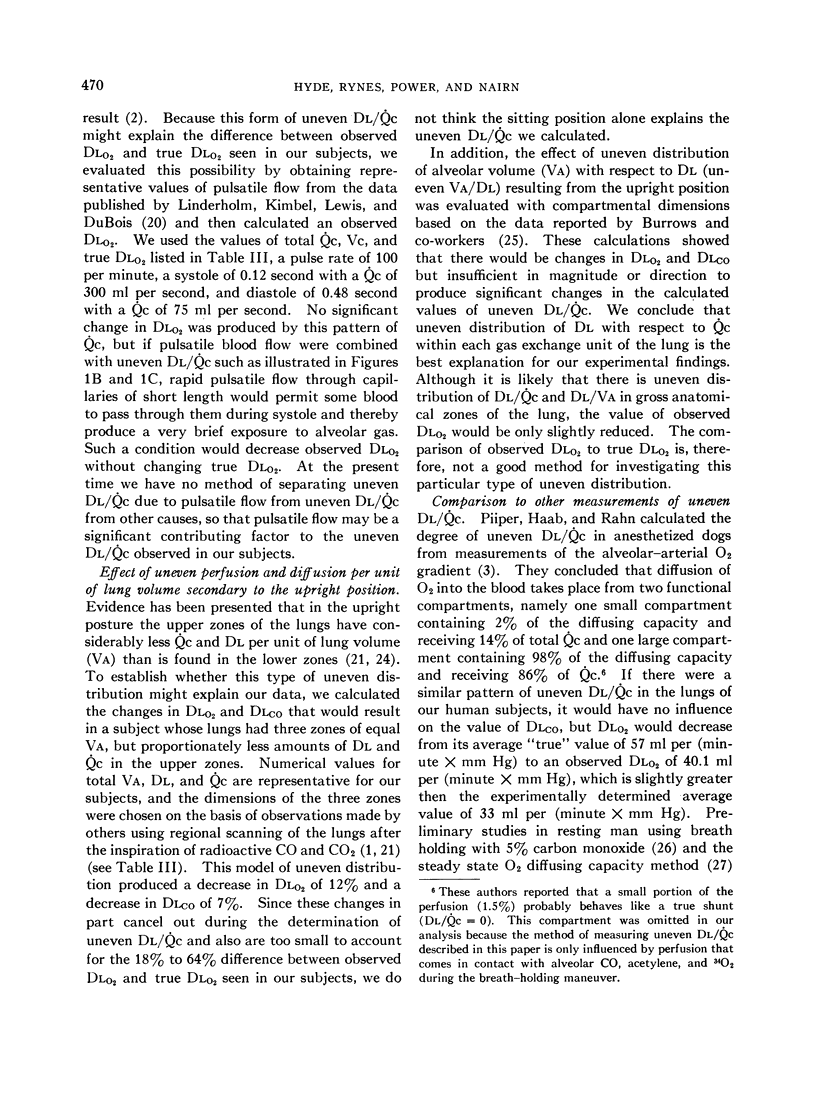
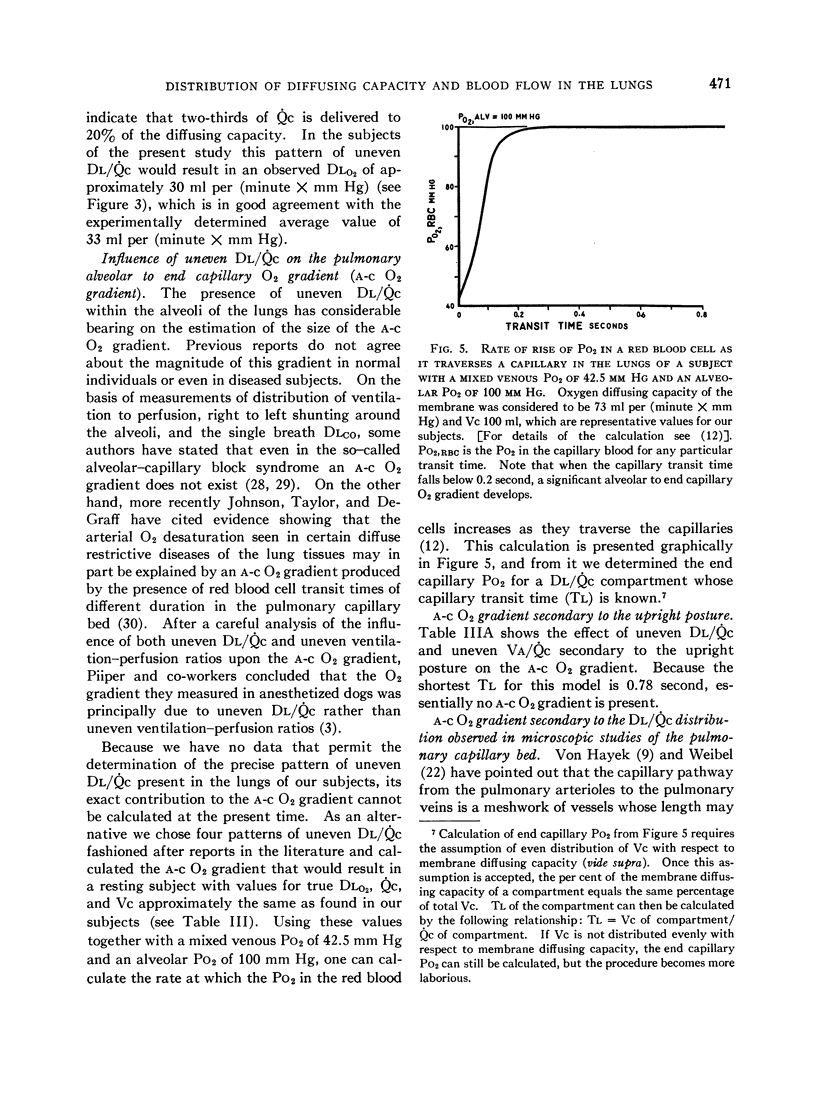
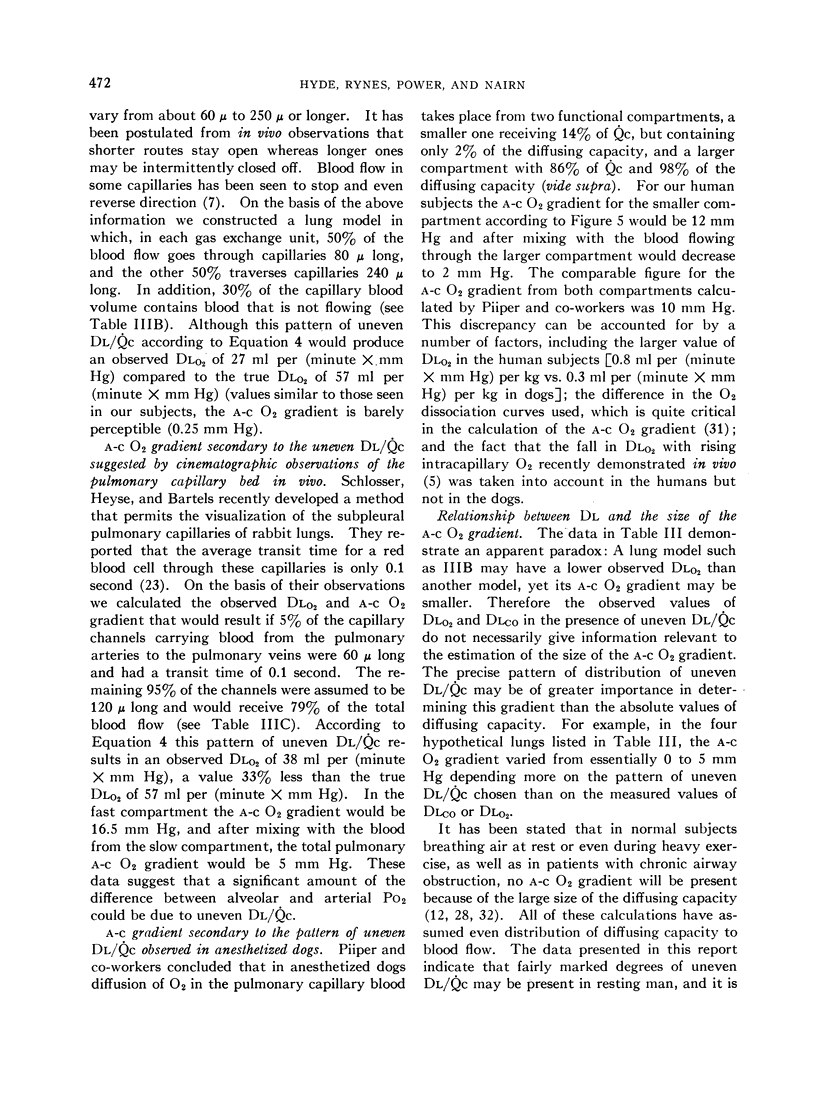
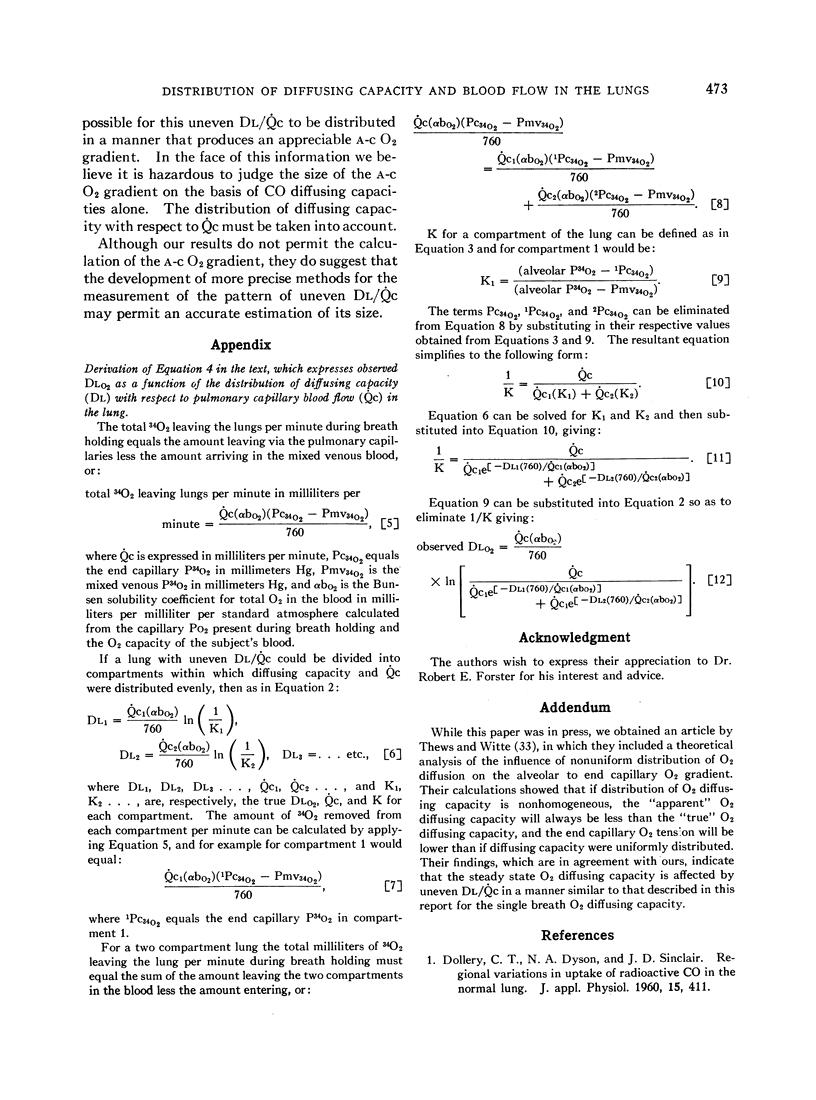
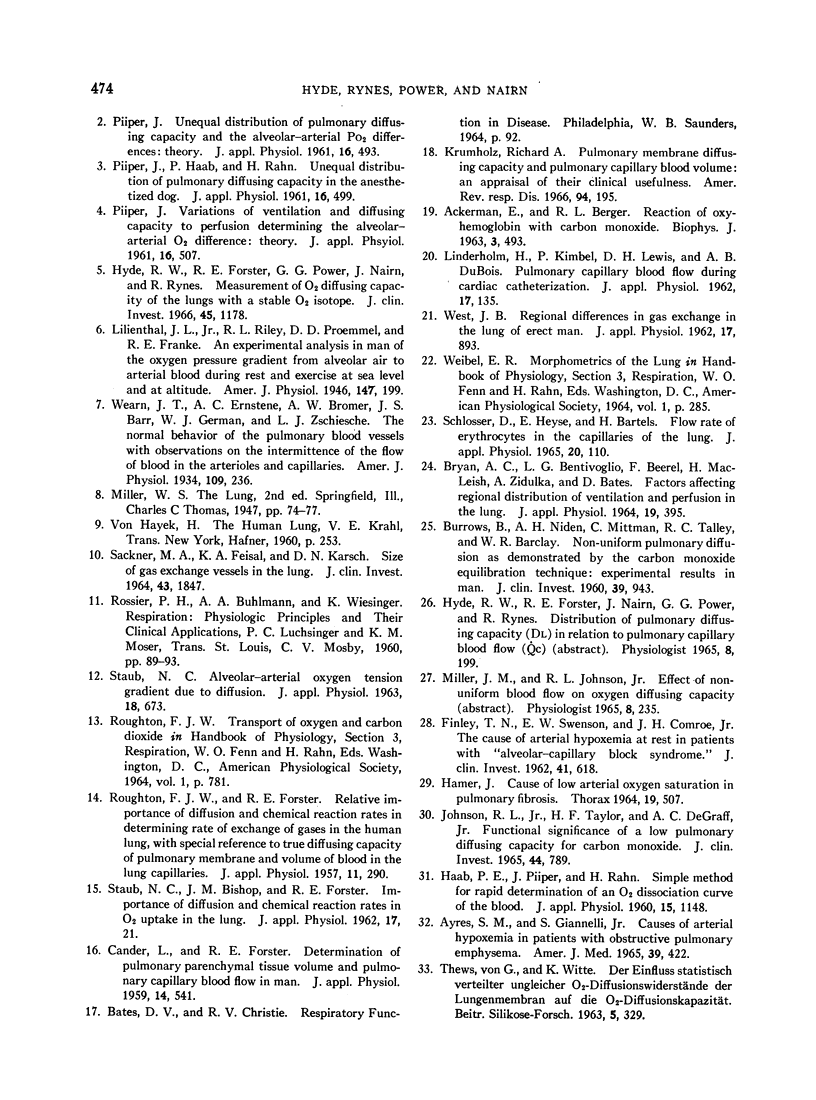
Images in this article
Selected References
These references are in PubMed. This may not be the complete list of references from this article.
- ACKERMAN E., BERGER R. L. REACTION OF OXYHEMOGLOBIN WITH CARBON MONOXIDE. Biophys J. 1963 Nov;3:493–505. doi: 10.1016/s0006-3495(63)86834-4. [DOI] [PMC free article] [PubMed] [Google Scholar]
- AYRES S. M., GIANNELLI S., Jr CAUSES OF ARTERIAL HYPOXEMIA IN PATIENTS WITH OBSTRUCTIVE PULMONARY EMPHYSEMA. Am J Med. 1965 Sep;39:422–428. doi: 10.1016/0002-9343(65)90209-3. [DOI] [PubMed] [Google Scholar]
- BRYAN A. C., BENTIVOGLIO L. G., BEEREL F., MACLEISH H., ZIDULKA A., BATES D. V. FACTORS AFFECTING REGIONAL DISTRIBUTION OF VENTILATION AND PERFUSION IN THE LUNG. J Appl Physiol. 1964 May;19:395–402. doi: 10.1152/jappl.1964.19.3.395. [DOI] [PubMed] [Google Scholar]
- BURROWS B., NIDEN A. H., MITTMAN C., TALLEY R. C., BARCLAY W. R. Non-uniform pulmonary diffusion as demonstrated by the carbon monoxide equilibration technique: experimental results in man. J Clin Invest. 1960 Jun;39:943–951. doi: 10.1172/JCI104115. [DOI] [PMC free article] [PubMed] [Google Scholar]
- DOLLERY C. T., DYSON N. A., SINCLAIR J. D. Regional variations in uptake of radioactive CO in the normal lung. J Appl Physiol. 1960 May;15:411–417. doi: 10.1152/jappl.1960.15.3.411. [DOI] [PubMed] [Google Scholar]
- FINLEY T. N., SWENSON E. W., COMROE J. H., Jr The cause of arterial hypoxemia at rest in patients with "alveolarcapillary block syndrome". J Clin Invest. 1962 Mar;41:618–622. doi: 10.1172/JCI104517. [DOI] [PMC free article] [PubMed] [Google Scholar]
- HAAB P. E., PIIPER J., RAHN H. Simple method for rapid determination of an 02 dissociation curve of the blood. J Appl Physiol. 1960 Nov;15:1148–1149. doi: 10.1152/jappl.1960.15.6.1148. [DOI] [PubMed] [Google Scholar]
- HAMER J. CAUSE OF LOW ARTERIAL OXYGEN SATURATION IN PULMONARY FIBROSIS. Thorax. 1964 Nov;19:507–514. doi: 10.1136/thx.19.6.507. [DOI] [PMC free article] [PubMed] [Google Scholar]
- Hyde R. W., Forster R. E., Power G. G., Nairn J., Rynes R. Measurement of O2 diffusing capacity of the lungs with a stable O2 isotope. J Clin Invest. 1966 Jul;45(7):1178–1193. doi: 10.1172/JCI105424. [DOI] [PMC free article] [PubMed] [Google Scholar]
- JOHNSON R. L., Jr, TAYLOR H. F., DEGRAFF A. C., Jr FUNCTIONAL SIGNIFICANCE OF A LOW PULMONARY DIFFUSING CAPACITY FOR CARBON MONOXIDE. J Clin Invest. 1965 May;44:789–800. doi: 10.1172/JCI105191. [DOI] [PMC free article] [PubMed] [Google Scholar]
- Krumholz R. A. Pulmonary membrane diffusing capacity and pulmonary capillary blood volume: an appraisal of their clinical usefulness. Am Rev Respir Dis. 1966 Aug;94(2):195–200. doi: 10.1164/arrd.1966.94.2.195. [DOI] [PubMed] [Google Scholar]
- LINDERHOLM H., KIMBEL P., LEWIS D. H., DUBOIS A. B. Pulmonary capillary blood flow during cardiac catheterization. J Appl Physiol. 1962 Jan;17:135–141. doi: 10.1152/jappl.1962.17.1.135. [DOI] [PubMed] [Google Scholar]
- PIIPER J. Variations of ventilation and diffusing capacity to perfusion determining the alveolar-arterial O2 difference: theory. J Appl Physiol. 1961 May;16:507–510. doi: 10.1152/jappl.1961.16.3.507. [DOI] [PubMed] [Google Scholar]
- ROUGHTON F. J., FORSTER R. E. Relative importance of diffusion and chemical reaction rates in determining rate of exchange of gases in the human lung, with special reference to true diffusing capacity of pulmonary membrane and volume of blood in the lung capillaries. J Appl Physiol. 1957 Sep;11(2):290–302. doi: 10.1152/jappl.1957.11.2.290. [DOI] [PubMed] [Google Scholar]
- SACKNER M. A., FEISAL K. A., KARSCH D. N. SIZE OF GAS EXCHANGE VESSELS IN THE LUNG. J Clin Invest. 1964 Sep;43:1847–1855. doi: 10.1172/JCI105058. [DOI] [PMC free article] [PubMed] [Google Scholar]
- SCHLOSSER D., HEYSE E., BARTELS H. FLOW RATE OF ERYTHROCYTES IN THE CAPILLARIES OF THE LUNG. J Appl Physiol. 1965 Jan;20:110–112. doi: 10.1152/jappl.1965.20.1.110. [DOI] [PubMed] [Google Scholar]
- STAUB N. C. Alveolar-arterial oxygen tension gradient due to diffusion. J Appl Physiol. 1963 Jul;18:673–680. doi: 10.1152/jappl.1963.18.4.673. [DOI] [PubMed] [Google Scholar]
- STAUB N. C., BISHOP J. M., FORSTER R. E. Importance of diffusion and chemical reaction rates in O2 uptake in the lung. J Appl Physiol. 1962 Jan;17:21–27. doi: 10.1152/jappl.1962.17.1.21. [DOI] [PubMed] [Google Scholar]
- WEST J. B. Regional differences in gas exchange in the lung of erect man. J Appl Physiol. 1962 Nov;17:893–898. doi: 10.1152/jappl.1962.17.6.893. [DOI] [PubMed] [Google Scholar]



